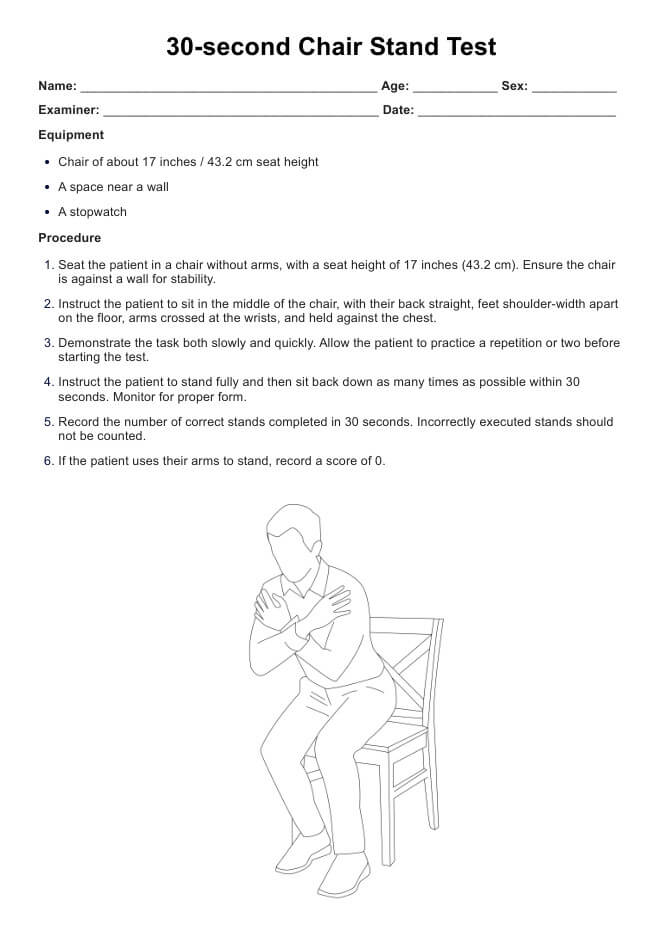The protocol involves having the patient sit in a chair without armrests, stand up, and sit down as many times as possible within 30 seconds without using their hands for support. The healthcare professional monitors the performance and counts the number of successful stands.

30-second Chair Stand Test
Gauge your patient's leg strength and endurance with this 30-Second Chair Stand Test! It's a great and easy-to-conduct way to assess their risk of falling.
30-second Chair Stand Test Template
Commonly asked questions
Scoring 30-second sit-to-stand tests is based on the total number of times the patient can stand up fully within 30 seconds. The therapist records the count and compares it to the average scores for the patient's age group to assess their performance.
For adults aged 21-29, a good score is around 30-35 repetitions, while for older adults aged 60-64, a good score is 14-19 repetitions for men and 12-17 for women. Our template contains a more complete 30-second sit-to-stand test age norms table for older age groups, ranging from 65 to 95 years old.
EHR and practice management software
Get started for free
*No credit card required
Free
$0/usd
Unlimited clients
Telehealth
1GB of storage
Client portal text
Automated billing and online payments











